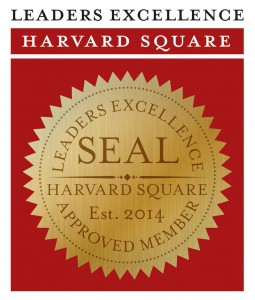Introduction to AI for Leaders:
As a Leader, navigating the ever-evolving landscape of artificial intelligence (AI) can sometimes feel like stepping into the unknown. Yet, understanding and leveraging AI has become a critical component of staying competitive in today’s digital age. This Blog aims to demystify AI for Leaders, answering key questions to help you harness the power of AI and drive innovation within your organization.
What is AI, and why is it important for Leaders to understand?
Artificial Intelligence (AI) is the simulation of human intelligence in machines programmed to think and act like humans. It encompasses a range of technologies, including machine learning, natural language processing, and computer vision, allowing machines to perform tasks that traditionally required human intelligence.
For Leaders, understanding Artificial Intelligence is crucial because it has the potential to revolutionize business operations, drive strategic decision-making, and unlock new growth opportunities. By harnessing AI technologies, Leaders can enhance efficiency, improve customer experiences, and gain a competitive edge in their respective industries.
How can AI benefit Leaders and their organizations?
AI offers a myriad of benefits for Leaders and their organizations. Firstly, AI-powered analytics can provide valuable insights into market trends, customer behavior, and operational performance, enabling Leaders to make data-driven decisions with greater precision and agility.
Additionally, Artificial Intelligence-driven automation can streamline repetitive tasks, freeing up time for Leaders to focus on strategic initiatives and innovation. Moreover, AI can facilitate personalized experiences for customers, driving engagement and loyalty while generating new revenue streams for the organization.
What are some practical applications of AI for Leaders?
There are a wide variety of practical applications that can cater to various business verticles such as:
- Strategic Planning: AI-powered predictive analytics can forecast market trends and identify growth opportunities, promoting strategic planning initiatives.
- Operations Optimization: AI-driven automation can streamline processes, improve efficiency, and reduce costs across operational functions, from supply chain management to customer service AI has the power to bring greater optimization to all these verticles.
- Customer Engagement: AI-powered chatbots and virtual assistants can enhance customer experiences by providing personalized support and recommendations, driving higher engagement and satisfaction from the customer.
- Risk Management: AI can analyze vast amounts of data to proactively identify potential risks and mitigate threats, safeguarding the organization’s reputation and assets in various forms.
What are the challenges and considerations Leaders face when implementing AI?
While the benefits of AI are significant, Leaders must navigate several challenges and considerations when implementing AI initiatives such as:
- Data Privacy and Security: Leaders must ensure compliance with data privacy regulations and implement robust security measures to protect sensitive information.
- Talent Acquisition and Upskilling: Building a skilled AI workforce requires attracting top talent and investing in training programs to upskill existing employees to outgrow the traditional way of work.
- Ethical and Societal Implications: Leaders must address ethical considerations surrounding AI, such as algorithmic bias and the impact on jobs and society, to ensure deployment of AI takes place in a sensible manner.
How can Leaders foster a culture of AI adoption within their organizations?
Leaders play a pivotal role in fostering a culture of Artificial Intelligence adoption within their organizations by:
- Championing AI Initiatives: Leaders should lead by example, demonstrating their commitment to AI adoption and encouraging buy-in from stakeholders across the organization.
- Investing upskilling: Providing employees with AI education and training programs can empower them to embrace AI technologies and contribute to AI-driven innovation.
- Encouraging Experimentation and Innovation: Leaders should create an environment that encourages experimentation and innovation, allowing teams to explore Artificial Intelligence solutions and pilot projects with minimal risk.
Conclusion:
In conclusion, Artificial Intelligence presents unprecedented opportunities for Leaders to drive innovation, optimize operations, and deliver exceptional customer experiences. Lastly, By understanding the fundamentals of Artificial Intelligence, embracing its potential, and addressing key considerations, Leaders can position their organizations for success in an increasingly Artificial Intelligence-driven world.





